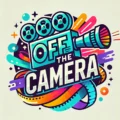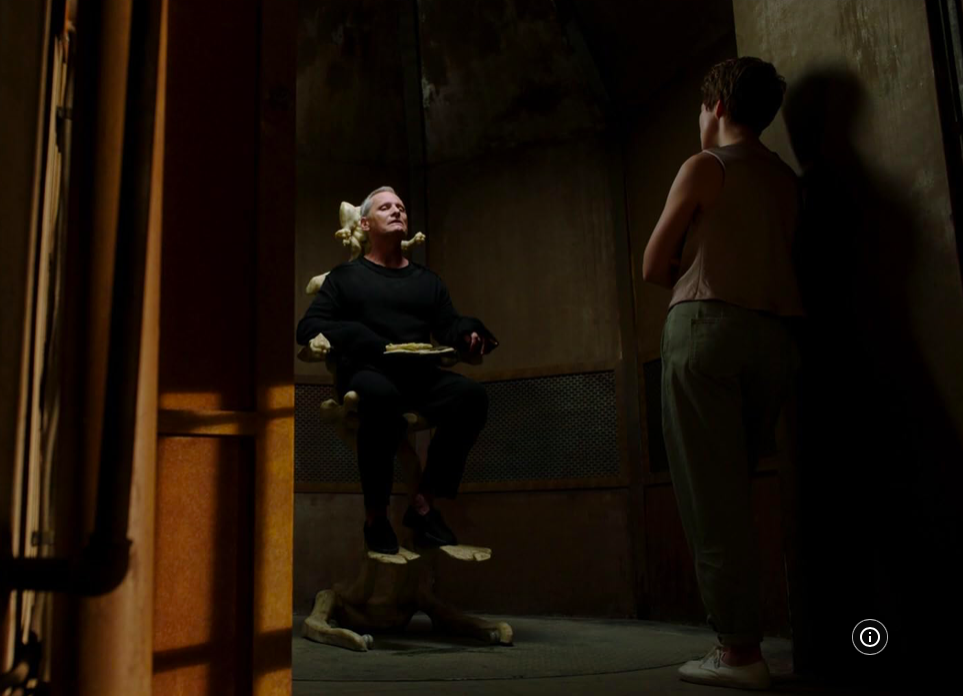OTC Rating : 4/5
Introduction
Crimes of the Future marks David Cronenberg’s return to the science fiction and horror genres, delving into a dystopian future where human evolution has taken a bizarre turn. This film is a thought-provoking exploration of body modification, art, and the essence of humanity.
Story & Themes
Set in a future where humans have adapted to a synthetic environment, the film follows performance artist Saul Tenser (Viggo Mortensen) and his partner Caprice (Léa Seydoux). Saul’s body continuously develops new organs, which Caprice surgically removes in live performances. This new form of art challenges societal norms and raises questions about the direction of human evolution.
The narrative intertwines themes of transformation, pain, and the blurred lines between art and biology. It presents a world where surgery becomes a form of expression, and the human body is both canvas and medium.
Image courtesy : IMDB
Direction: David Cronenberg’s Vision
Cronenberg’s direction is deliberate and introspective. He crafts a world that is both unsettling and fascinating, staying true to his signature style of body horror. The film doesn’t rely on jump scares but instead builds a pervasive sense of unease, prompting viewers to reflect on the implications of technological and biological advancements.
Performances
- Viggo Mortensen delivers a nuanced performance as Saul Tenser, portraying the physical and emotional toll of his condition with subtlety.
- Léa Seydoux embodies Caprice with a blend of strength and vulnerability, navigating the complexities of their art and relationship.
- Kristen Stewart plays Timlin, an investigator obsessed with Saul’s work, adding layers of intrigue and tension to the narrative.
The cast’s performances ground the film’s abstract concepts, making the characters’ experiences relatable despite the surreal setting.
Cinematography
Douglas Koch’s cinematography captures the film’s eerie atmosphere with muted color palettes and stark lighting. The visual composition emphasizes the sterile and decaying environments, reflecting the characters’ internal struggles and the broader societal decay.
Image courtesy : IMDB
Production Design & Art Direction
The production design, led by Carol Spier, creates a world that is both futuristic and deteriorating. The settings are filled with organic-looking machines and decaying structures, symbolizing the fusion of technology and biology. The art direction reinforces the film’s themes, presenting a society on the brink of transformation.
Sound Design & Music
Howard Shore’s score complements the film’s tone, using ambient sounds and dissonant melodies to enhance the unsettling atmosphere. The sound design incorporates mechanical and organic noises, blurring the lines between man and machine, and immersing the audience in the film’s world.
Image courtesy : IMDB
Editing
Christopher Donaldson’s editing maintains a deliberate pace, allowing scenes to unfold slowly and giving viewers time to absorb the complex themes. The transitions are smooth, and the rhythm supports the film’s contemplative nature.
Conclusion
Crimes of the Future is a challenging yet rewarding film that delves into the possibilities and consequences of human evolution. Through its meticulous direction, compelling performances, and cohesive technical elements, the film invites viewers to ponder the future of humanity and the role of art in society.
Why You Should Watch It:
- A thought-provoking narrative exploring human evolution and art
- Strong performances by Viggo Mortensen, Léa Seydoux, and Kristen Stewart
- Distinctive visual and sound design creating an immersive experience
- A return to form for director David Cronenberg, blending science fiction and body horror

